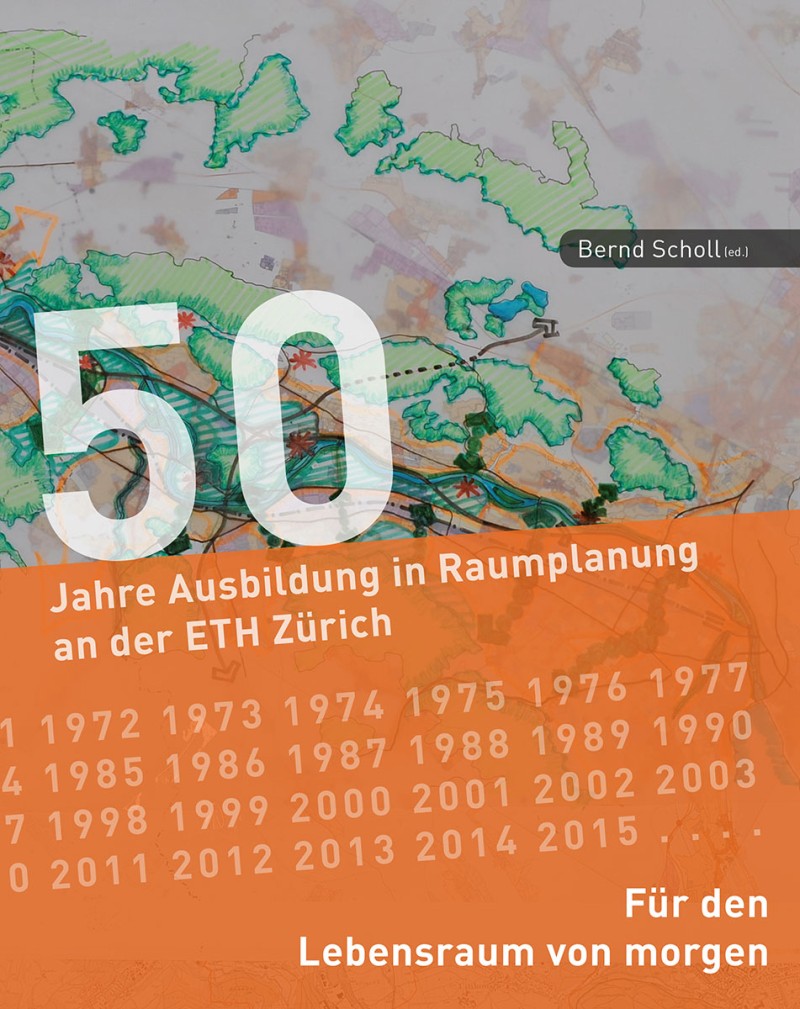Für den Lebensraum von morgen
- 50 Jahre Ausbildung in Raumplanung an der ETH Zürich
Raumplanung, Raumordnung, Stadtplanung
Die ETH Zürich kann auf 50 Jahre Ausbildung in Raumplanung zurückblicken. 1965 gab es an der ETH Zürich erste Fortbildungsangebote für Berufstätige im Bereich Raumplanung. 1967 wurde ein interdisziplinäres zweijähriges Nachdiplomstudium (NDS) Raumplanung eingeführt. Im Zuge der Bologna-Reform wurde es 2005 vom Master of Advanced Studies in Raumplanung (MAS RP) abgelöst.
Ist das 1967 eingeführte Lehrangebot noch ein viersemestriges Vollzeitstudium gewesen, wird es nun als viersemestriges berufsbegleitendes Studium angeboten. Darüber hinaus besteht die Möglichkeit, einzelne Lehrmodule im Rahmen eines CAS (Certificate of Advanced Studies) oder DAS (Diploma of Advanced Studies) zu belegen.
So wie die Raumplanung steht auch die Raumplanungsausbildung vor grossen Herausforderungen. Einerseits gilt es, die höhere Ausbildung in Raumplanung auf die anspruchsvollen Aufgaben innerhalb der Schweiz zu fokussieren, anderseits dürfen die Landesgrenzen überschreitenden Fragestellungen und der internationale Austausch nicht vernachlässigt werden.
Pioniere, Absolventen, Mitwirkende und Wegbegleiter der Raumplanungsausbildung an der ETH Zürich äussern sich zu bedeutenden Wegmarken und Herausforderungen der Raumplanungsausbildung an der ETH Zürich und darüber hinaus.
Bitte beachten Sie auch die Publikationen des Instituts für Raum- und Landschaftsentwicklung (IRL) der ETH Zürich.
"Durch 6-farbig gedruckte Doppelseiten werden die Entwicklungen der
Raumplanung in der Schweiz mit wichtigen Weltereignissen und den
Entwicklungen im Land in Relation zueinander gesetzt. Dadurch lässt sich
ein guter Überblick über die Entwicklungen der letzten 5 Jahrzehnte
gewinnen."
(Achim Dombert, VDV Magazin 2/2016, Geodäsie und Geomatik, April 2016, S. 146)
- Auflage: 1., 2015
- Seiten: 116 Seiten
- Abbildungen: zahlreiche Abbildungen, durchgehend farbig
- Format in cm: 21,0 x 26,5
- Einbandart: PDF
- ISBN: 978-3-7281-3737-1
- DOI: 10.3218/3737-1
- Sprache: Deutsch
- Lieferstatus: gedruckte Ausgabe vergriffen, als eBook lieferbar
Zusatzangebote
eBook Anbieter
Preis je nach Anbieter, erhältlich u.a. bei:
 |
Buchhaus.ch (Lüthy, Balmer, Stocker) | zum Anbieter |
 |
eBook.de | zum Anbieter |
 |
Google Play | zum Anbieter |
 |
Amazon Kindle | zum Anbieter |
 |
Ciando | zum Anbieter |



